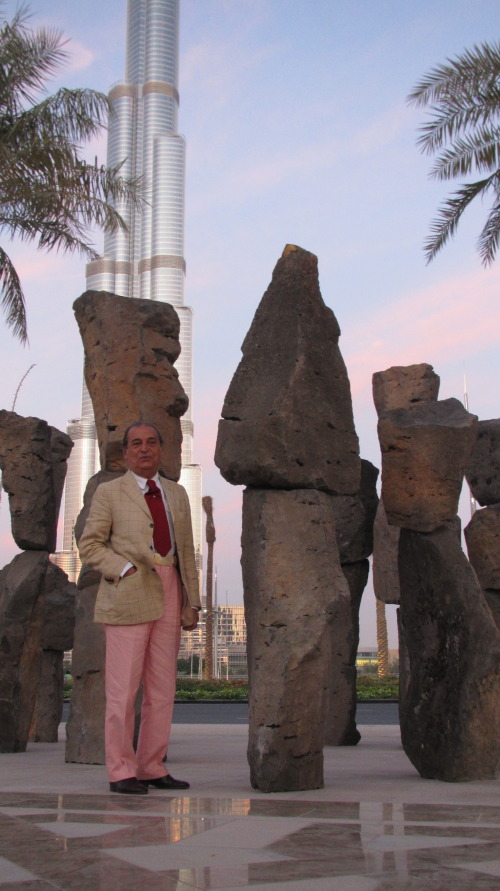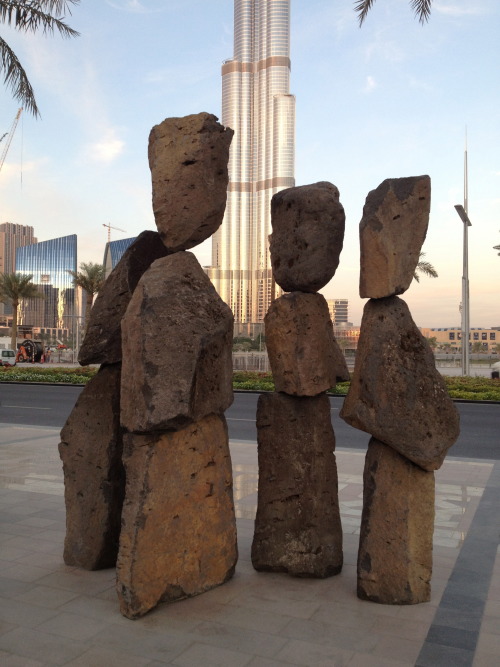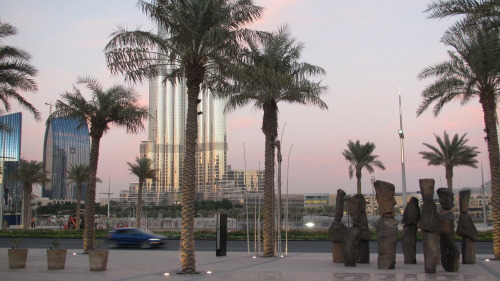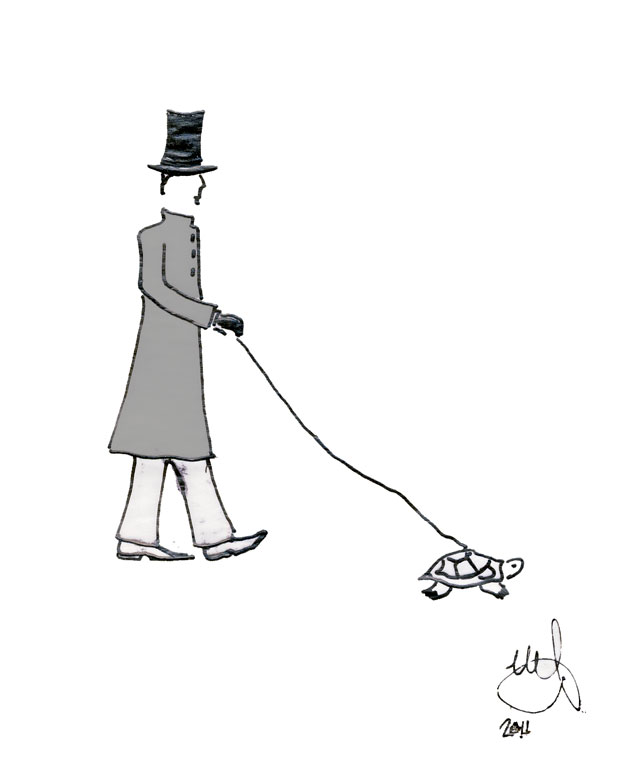The Gathering
 Friday, November 18, 2011 at 10:23AM
Friday, November 18, 2011 at 10:23AM Visiting the Pavilion in Downtown Dubai yesterday, I noticed that there were workers completing the installation of a new sculpture on the sidewalk.
After the installation was completed I went outside to photograph the figures from various angles, before going inside to continue what I was working on.
As sunset approached the pink fingers stretching across the sky to embrace the Burj Khalifa drew me outside again. The chatting figures of the sculpture seemed happy in their new setting.
While photographing them a gentleman and lady approached. Seeing me photograph the figures, she told me that the gentleman was the artist. I was privileged to meet architect and sculptor Xavier Corbero.
A man with incredible vision, Corbero has built a dream home whose spaces are linked by underground passageways.
“His original vision of the property has since expanded to include a retreat for artists, studio spaces, workshops, a foundry, dozens of surreal chambers for residents and guests, sprawling galleries, living rooms, a myriad of hobbit nooks all connected by serpentine stairways filling over 10,000 square meters.”
Salvador Dali was Corbero’s first patron and Corbero is now considered to be Spain’s most important living sculptor.
"You must leave things open so the person enjoys or looks," says Corbero. "I feel that when people look at a piece of art they become artists, they see what they see not what there is. What there is helps them to see something else and they feel better because they see something they were not seeing before seeing that. That's what I like to do.”
Standing next to his work, he seemed to effortlessly blend in with the figures, even unintentionally perhaps, replicating the pose of the figure he was standing next to.

In her piece on Corbero’s work in Beirut, Micheline Hazou, @mich1mich writes,
“Perhaps it’s the way the figures are positioned, in relation to the space and to one another that is as important as their bulk and mass…”
Corbero has said, "What is good is the scale, if you get the scale right, space stops being space to become mind. And this happens in a sculpture and it happens in architecture."
The sculpture, called The Gathering, invites one into its circle. The chatting figures capture for me the mix that is Dubai, a city where many different nationalities and cultures meet.
The figures lean into each other with attention. They are accommodating of each other’s space and seem to acknowledge the other, while at the same time forming a unit. The energy flowing between them as they connect is almost palpable.
There is the sense that more personalities are about to join the gathering and engage in conversation. This excites me as non-judgmental listening and peaceful dialogue is so crucial in the world right now.
I immediately think too of this here2here space where we are all gathering now. What does it matter where we are physically situated in time and space. We can gather, be present here together, converse and share. We might all be different but we are more similar than we can imagine.
Whether gathering on sidewalks of cities, or sensing our interconnectedness in a large web made possible by technology, together we bear witness to Presence.
 Corbero,
Corbero,  Salvador Dali,
Salvador Dali,  art,
art,  culture,
culture,  here2here,
here2here,  interconnectedness,
interconnectedness,  mindfulness,
mindfulness,  place,
place,  sculptures,
sculptures,  space,
space,  technology in
technology in  Art,
Art,  culture,
culture,  here2here,
here2here,  interconnectedness,
interconnectedness,  mindfulness,
mindfulness,  place,
place,  technology
technology  Email Article
Email Article 




